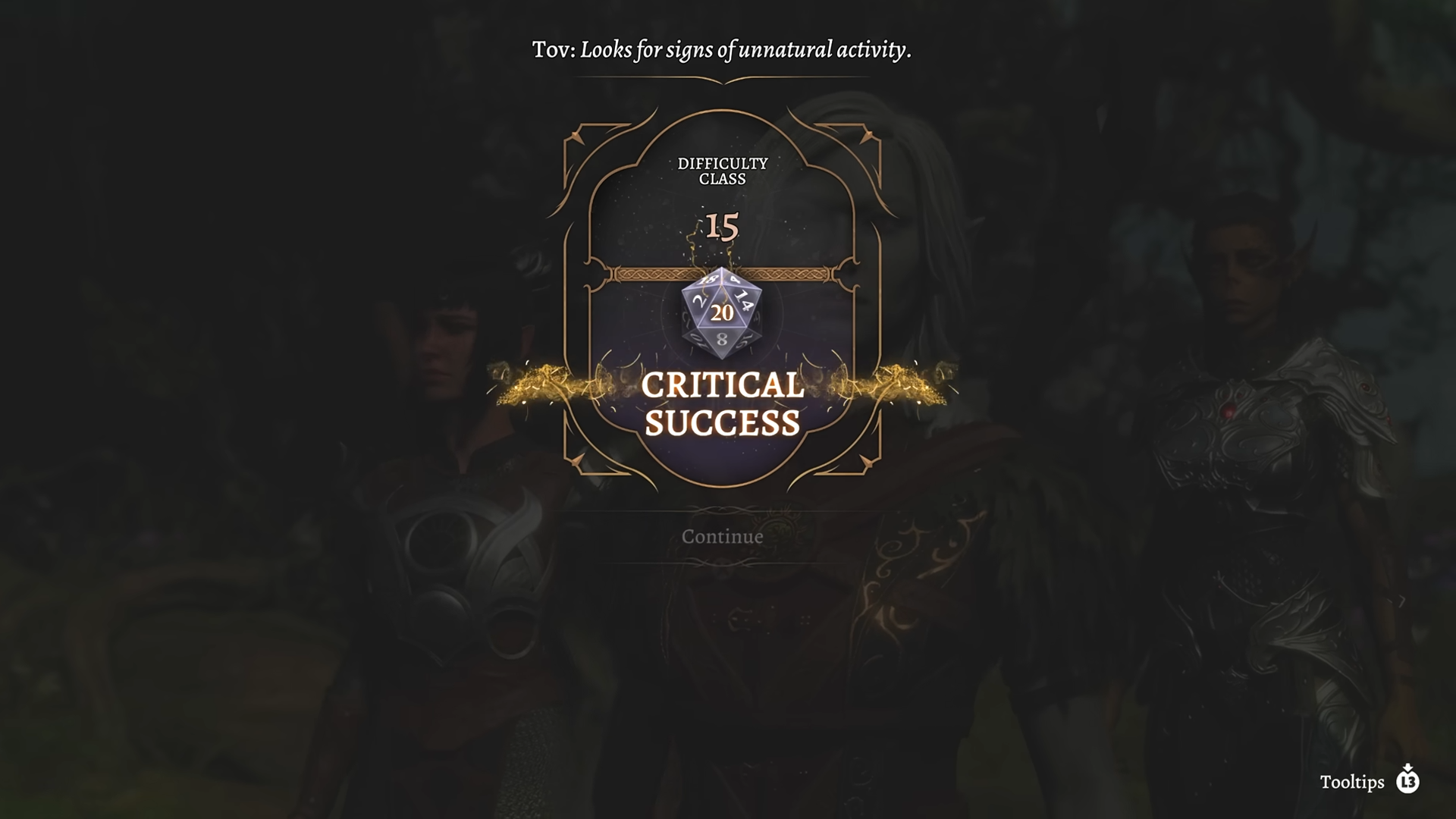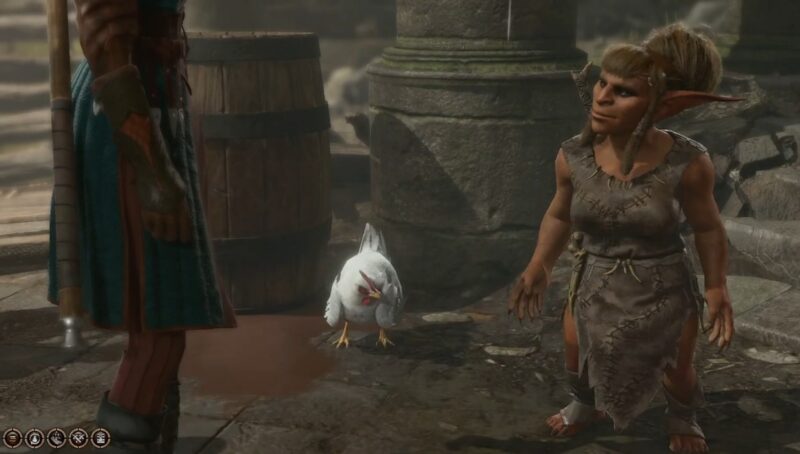Discover the best Bard weapons in Baldur’s Gate 3, equipping your class with the top eight early and end-game choices.

Baldur’s Gate 3 is full of powerful weapons and different weapon types. Bards are proficient in simple weapons, hand crossbows, longswords, rapiers, and shortswords. This gives them a good range of options to choose from, depending on their play style. The Bard subclasses give you many options to either play as a melee Rapier build, a powerful spell caster, or a support healer. This guide and ranking explain and list the best weapons for the Bard class in BG3, along with how you can utilize them.
What is the Best Weapon for Bard Class in Baldur’s Gate 3
Duellist’s Prerogative legendary Rapier is the best weapon for the Bard in Baldur’s Gate 3. Duellist’s Prerogative allows the Bard to attack with a bonus action, or reaction, and lower your chance of to critical hit by 1. You can add necrotic damage equal to your proficiency bonus and compel enemies to attack you. Given the weak selection of Bard spells at later levels, this is the best weapon to use for a powerful Bard Build in BG3.
Best Weapons for Bard Class in BG3 overview:
- Duellist’s Prerogative
- Markoheshkir
- The Blood of Lathander
- Infernal Rapier
- Incandescent Staff
- Darkfire Shortbow
- Sword of Screams
- Staff of Arcane Blessing
8 Staff of Arcane Blessing

Staff of Arcane Blessing Blessing features in Baldur’s Gate 3:
- Damage: 1d6 Bludgeoning
- Type: Quarterstaves
- Requirements: Simple Weapon Proficiency
- Rarity: Uncommon
- Location: Underdark basement of Arcane Tower using Guiding Light ring Act 1.
Staff of Arcane Blessing Blessing is an Act 1 Quarterstave that can be obtained in the Arcane Tower in the Underdark. The Bard makes a great support healer build, but unlike the Cleric, doesn’t have access to a wide variety of spells. This staff gives the Bless spell once per long rest which grants up to three allies an additional 1d4 to Saving Throws and Weapon Attack Rolls, and an additional 2d4 to Spell Attack Rolls. This acts as a very powerful buff spell that requires concentration for a melee or martial weapon-focused party.
Particularly Barbarians, Fighters, and Paladins using the Great Weapon Master feat benefit from this increasing their chance to land an attack. Depending on your subclass proficiencies, you can combine a Quarterstaff with a Shield because it’s a versatile weapon. You most likely won’t be using the weapon attack, merely the added spell to help aid and buff your allies. Consider this a strong weapon choice in Act 1 for those who support build Bards.
7 Sword of Screams
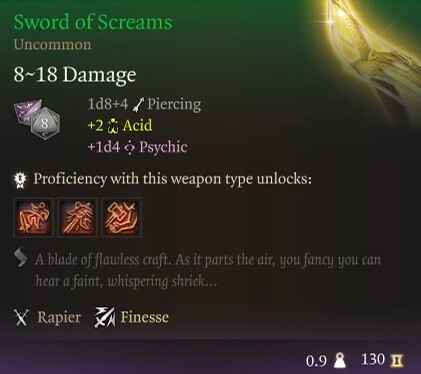
Sword of Screams features in Baldur’s Gate 3:
- Damage: 1d8 Piercing + 1d4 Psychic
- Type: Rapier
- Requirements: Martial Weapons Proficiency
- Rarity: Uncommon
- Location: Dropped by Nere in Grymforge Act 1.
The Sword of Screams is an Act 1 Rapier for Bards build like the College of Sword, who relies on a combination of weapons and spells for damage. This Rapier deals 1d8 piercing damage along with 1d4 psychic. You can combine this Rapier with a feat, Dual Wielder, which allows Two-Weapon Fighting even if you’re not in light armour. Then you can use two Rapiers in medium armour for an aggressive melee weapon build.
You can combine the Sword of Screams weapon with Rapier +1 and get a big upgrade in damage early in the game. Rapiers are also useful due to their weapon actions. Piercing Strike causes gaping wounds, which deals an additional 2 piercing damage against the creature. Flourish can possibly proc Off-balance status effect, giving you an Advantage with Attack Rolls. This is a very powerful combination with the College of Swords Extra Attack subclass feature at level 6, allowing you to attack twice in one action. Consider Rapiers and this particular one a great pickup in Act 1.
6 Darkfire Shortbow
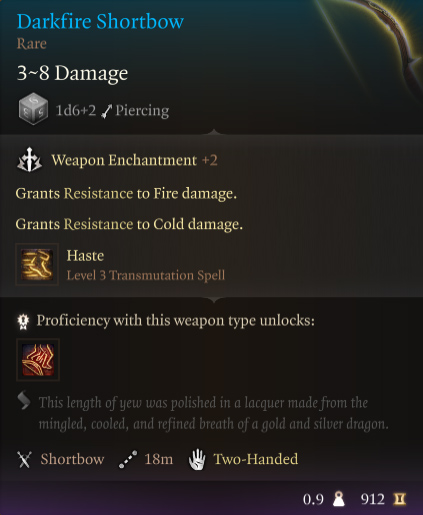
Darkfire Shortbow features in Baldur’s Gate 3:
- Damage: 1d6 + 2 Piercing
- Type: Shortbow
- Requirements: Simple Weapon Proficiency
- Rarity: Rare
- Location: Sold by Dammon at Last Light Inn stables in Act 2.
Next up we have the Darkfire Shortbow coming in Act 2, sold by the trader Dammon in the Last Light Inn. Typically, Bards do not rely on ranged weapons for damage because their spells can outperform the damage. The useful thing with this weapon is the resistance to fire and cold damage along with a free spell. Equipping this weapon unlocks Haste spell once per long rest, which gives an ally or yourself an extra action if the spell holds.
Equipping a ranged weapon with a spell is an easy way to get extra spells without relying on the damage. Two more examples are Ne’er Isser which gives Magic Missile and Hellfire Hand Crossbow which gives Scorching Ray. Consider picking up extra-range weapons throughout your playthrough if they have extra spells and you have proficiency.
5 Incandescent Staff

Incandescent Staff features in Baldur’s Gate 3:
- Damage: 1d6 Bludgeoning
- Type: Quarterstaves
- Requirements: Simple Weapon Proficiency
- Rarity: Very Rare
- Location: Sold by Quartermaster Talli in Last Light Inn in Act 2.
The Incandescent Staff is a great choice for spellcasters looking for more damage. This Quarterstaff can be purchased from Talli in the Last Light Inn in Act 2. You get a free Fire Bolt cantrip and Fireball spell once per Long Rest. The Bards offensive spell selection is a bit weak, and having a staff give you a free Fireball is an easy way to add some damage in Act 2. The Fire Bolt cantrip can also be useful depending on your character creation and racial selection choices. Consider this a great pickup in Act 2 and if you have Shield Proficiency, you can use in conjunction to still get the Armour Class (AC) benefit.
4 Infernal Rapier

Infernal Rapier features in Baldur’s Gate 3:
- Damage: 1d8 + 2 Piercing
- Type: Rapier
- Requirements: Martial Weapons Proficiency
- Rarity: Very Rare
- Location: End of Act 2 Wyll companion reward free Zariel’s asset.
At the End of Act 2, Wyll has an important quest decision that can reward you with the Infernal Rapier. This weapon does 1d8 + 2 piercing damage but comes with an extraordinarily powerful Planar Ally spell. Once per Long Rest, you can cast Planar Ally Cambion, which summons a powerful ally with high damage, great mobility, and high health. The summoned Cambion lasts until a Long Rest, or it dies so it’s simply free power.

The Planar Ally is a very limited spell, and this will also help the Bard access a powerful ally regardless of which playstyle you adopt. This weapon alone is worth recruiting and progressing Wyll’s companion story. Depending on your gameplay decisions, you can start Act 3 with a powerful Rapier and a summon Cambion ability if you help Wyll.
3 The Blood of Lathander

The Blood of Lathander features in Baldur’s Gate 3:
- Damage: 1d6 + 3 Bludgeoning
- Type: Mace
- Requirements: Simple Weapon Proficiency
- Rarity: Legendary
- Location: Found in Crèche Y’llek, Blood of Lathander quest at end of Act 1.
At the end of Act 1, you can complete the Blood of Lathander quest and obtain the legendary mace, one of the top weapon choices for Bard Class in Baldur’s Gate 3. Maces are simple weapons and can be used on any Bard subclass. The Blood of Lathander mace makes an extraordinary support weapon combined with a shield. Lathander’s Blessing allows you to regain 2-12 hit points once you drop to 0, once per Long Rest. This helps you stay in the fight if for some reason you become downed. Moreover, this special feature heals for 1-6 in a 9-meter radius helping weakened allies as well.
The mace also greats Sunbeam, a level 6 spell dealing Radiant damage and blinding everything in its path. Level 6 spells are unlocked at level 11, so acquiring this mace in late Act 1 will give you a huge power boost for the rest of the game. Maces are one-handed and make a great combination for a support Bard with shield proficiency like the College of Valour.
Also Check:- BG3 Interactive Map
2 Markoheshkir
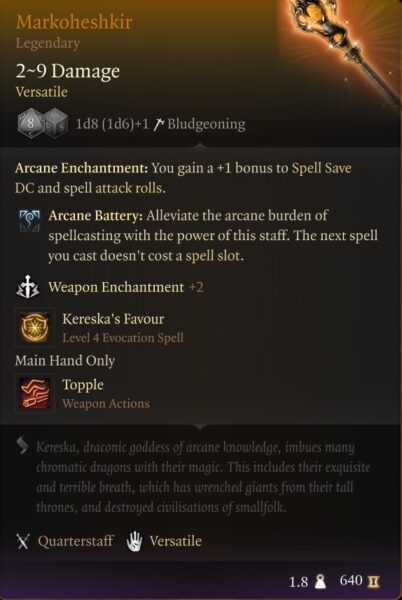
Markoheshkir features in Baldur’s Gate 3:
- Damage: 1d6 Bludgeoning
- Type: Quarterstaves
- Requirements: Simple Weapon Proficiency
- Rarity: Legendary
- Location: Ramazith’s Tower during Act 3.
For spellcasting Bard, nothing replaces the power of the Markoheshkir. This Quarterstaff can be obtained early in Act 3 and has a unique Arcane Battery special feature. Alleviate the arcane burden of spellcasting with the power of this staff. The next spell you cast doesn’t cost a spell slot. Once per Long Rest. At level 11, you unlock level 6 spells but will only have one level 6 spell slot for the entirety of the game. This staff is the workaround, giving you the ability to cast two ultra-powerful spells in one fight.
The Markoheshkir also has Kereska’s Favour which is a powerful level 4 Evocation spell. The downside of this staff and why it’s not the best is the Bard relies mainly on melee rapier attacks for damage rather than spells. The Bards spell selection at later levels is weaker, and Eyebite and Otto’s Irresistible Dance are some of the weakest level 6 spells in the game, and in comparison, to other spellcasters, are not as effective. Consider this a must-have weapon for support or spell-casting Bard builds.
1 Duellist’s Prerogative
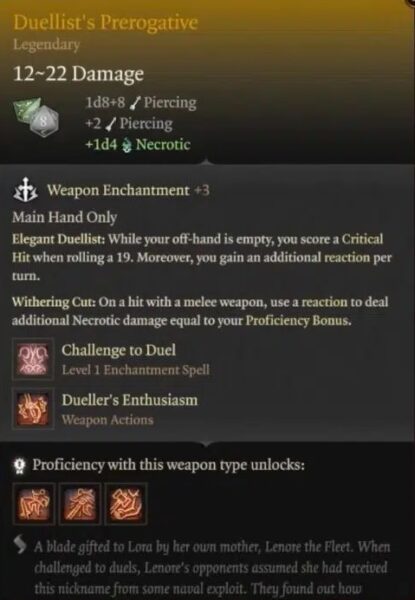
Duellist’s Prerogative features in Baldur’s Gate 3:
- Damage: 1d8 + 3 Piercing
- Type: Rapier
- Requirements: Martial Weapons Proficiency
- Rarity: Legendary
- Location: Reward for completing the quest Save Vanra in Act 3.
Duellist’s Prerogative is the Bards best weapon choice for the Bard due to its damage potential. This weapon is best used without an off-handed weapon equipped. You gain Elegant Duellist, lowering your chance to critical to 19 from 20. You also gain an additional reaction per turn, which can be used with the Withering Cut special feature. When hitting with a melee weapon, use a reaction to deal additional necrotic damage equal to your proficiency bonus. Combine this with the College of the Swords Extra attack for huge damage per turn.
Duellist’s Prerogative also has a unique special feature called Dueller’s Enthusiasm. When not dual-wielding, you can make an additional melee attack using your bonus action. Your off-hand weapon is usually used with a bonus action, but this weapon replaces the need to equip one making it an efficient choice for any Bard build to pick up.
Bard Weapon Proficiency in Baldur’s Gate 3
The Bard has many weapon choices thanks to its three subclasses: College of Lore, College of Swords, and College of Valour. Below is a chart of available weapon proficiencies for the Bard, depending on your subclass:
| College of Lore | College of Swords | College of Valour |
|---|---|---|
| Simple Weapons | Simple Weapons | Simple Weapons |
| Hand Crossbow | Hand Crossbow | Hand Crossbow |
| Longsword | Longsword | Longsword |
| Rapier | Rapier | Rapier |
| Shortsword | Shortsword | Shortsword |
| Scimitar | Shield | |
| Martial Weapon |
Typically, the Bard will play with a Rapier, Quarterstaff, and or a Shield with a secondary weapon as a Hand Crossbow. The College of Valour has nearly all weapon options due to Marital Weapon proficiency. Various races also can expand your weapon proficiency, but the Rapier and Quarterstaff are the most common.
Looking For More About Baldur’s Gate 3?
Thank you for reading Baldur’s Gate 3: Best Weapons for Bard Class Guide. We provide the latest news and create guides for Baldur’s Gate 3. Also, watch me play games on Twitch or visit my YouTube channel!
 Reddit
Reddit
 Email
Email
